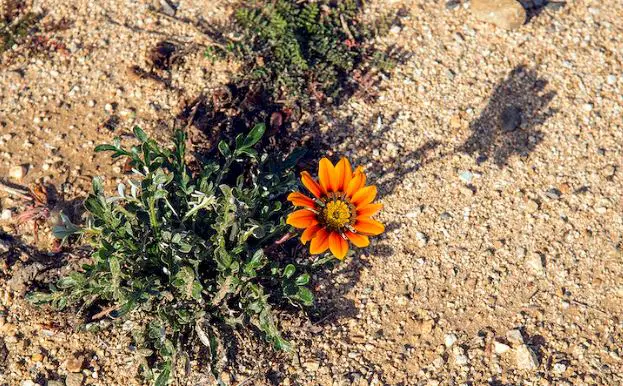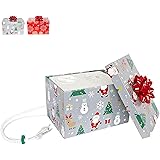Gardeners from all corners of the world are continuously seeking methods to improve their gardens, from fertilizers to pruning techniques. However, a crucial aspect of a thriving garden is often overlooked: drainage.
In this article, we’ll explore the benefits of using sharp sand for garden drainage, as well as the pros and cons of this versatile material.
What’s the Deal with Drainage?
Before we dive into the world of sharp sand, it’s essential to understand the importance of proper drainage in your garden. Drainage is the process by which excess water is removed from the soil, preventing waterlogging and promoting healthy root growth for your plants.
If water accumulates and doesn’t drain properly, plants can suffocate and rot, leading to poor growth or even death.
Introducing Sharp Sand: A Gardener’s Secret Weapon
Sharp sand, a gritty, coarse sand derived from crushed rocks, is a popular choice for improving garden drainage. But what makes it such an excellent option? Let’s find out.
Pros of Using Sharp Sand for Garden Drainage
- Improves Soil Structure
Sharp sand has a larger particle size compared to other sands, which helps create air pockets in the soil. These air pockets allow water to drain more efficiently, reducing the risk of waterlogging and promoting better root growth.
- Increases Drainage in Clay Soils
Clay soils are notorious for their poor drainage, as they tend to compact and retain water. Adding sharp sand to clay soil can significantly improve drainage by breaking up the dense clay particles, giving water a path to escape.
- Affordable and Easily Available
Sharp sand is relatively inexpensive and can be found at most garden centers, making it an accessible solution for gardeners looking to improve their garden’s drainage.
- Versatility
Aside from improving drainage, sharp sand can also be used as a base for laying paving stones, mixing with cement for mortar, and even improving the quality of your lawn by top dressing.
Read More: About Is Your Lucky Bamboo Stalk Turning Light Green?
Cons of Using Sharp Sand for Garden Drainage
- Incompatibility with Some Plants
Some plants, such as acid-loving plants like rhododendrons and azaleas, may not thrive in soil amended with sharp sand, as it can increase the soil’s alkalinity. If you have these types of plants in your garden, it’s essential to research their specific soil requirements before adding sharp sand.
- Potential Nutrient Leaching
Although sharp sand improves drainage, it can also lead to the leaching of nutrients from the soil, especially in sandy soils. To counteract this, you may need to add organic matter or fertilizers to maintain soil fertility.
- Labor-Intensive
Adding sharp sand to your garden can be a labor-intensive process, as it requires digging up the soil and mixing the sand in thoroughly. This might not be a feasible option for large gardens or gardeners with physical limitations.
The Art of Mixing: Combining Sharp Sand with Soil
To make the most of sharp sand’s drainage benefits, it’s crucial to mix it with your garden soil correctly. Here’s a step-by-step guide to help you along the way:
- Analyze your soil
Start by determining your garden’s soil type. Clay soils benefit the most from sharp sand, while sandy soils might require a different approach, such as adding organic matter.
- Calculate the required amount
Depending on your soil type and the size of your garden, the amount of sharp sand needed will vary. Generally, a ratio of one part sharp sand to three parts soil is recommended for clay soils. For sandy soils, consider using organic matter instead of sharp sand to improve drainage.
- Dig and mix
To incorporate sharp sand into your soil, dig up the top 6 to 12 inches of soil in your garden. Then, mix in the sharp sand thoroughly, ensuring even distribution. Make sure to break up any clumps of soil or sand during the mixing process.
- Replant and water
Once the sharp sand is mixed in, replant any plants that were temporarily removed and water the garden as needed. Keep an eye on your plants for any signs of nutrient deficiency, as sharp sand can cause nutrient leaching.
If necessary, add organic matter or fertilizers to maintain soil fertility.
Read More: About Does Sand Prevent Weed Growth?
Frequently Asked Questions (FAQs)
Sharp sand, with its coarse and gritty texture, is an ideal choice for improving garden drainage. Its large particle size helps create air pockets in the soil, allowing water to drain more efficiently.
Yes, sharp sand is an excellent option for improving garden drainage, particularly in clay soils. Mixing sharp sand into the soil can help break up dense clay particles and increase water drainage.
Sharp sand is the best choice for mixing with soil to improve drainage. Its coarse texture and large particle size create air pockets in the soil, allowing water to drain more efficiently.
To improve garden soil drainage, you can:
Add sharp sand to your soil, especially if you have clay soil.
Incorporate organic matter, such as compost or well-rotted manure, to improve soil structure.
Create raised beds to elevate the soil and promote better drainage.
Install a drainage system, such as French drains or perforated pipes, to remove excess water.
Grade your garden so that it slopes away from buildings and low-lying areas, directing excess water toward proper drainage points.
The best material for garden drainage depends on your specific needs and soil type. Sharp sand is an excellent choice for improving drainage in clay soils, while organic matter like compost can help improve soil structure and drainage in sandy soils. In some cases, installing a drainage system, such as French drains or perforated pipes, may be necessary for optimal drainage.
No, sharp sand and river sand are not the same. Sharp sand is a coarse, gritty sand derived from crushed rocks, while river sand is a naturally occurring, fine-textured sand found along riverbanks. Sharp sand is better for improving garden drainage due to its larger particle size and ability to create air pockets in the soil.
The Takeaway
Sharp sand is a valuable resource for gardeners looking to improve their garden’s drainage, particularly in clay soils. By incorporating sharp sand into your garden, you can help prevent waterlogging, promote healthy root growth, and ultimately, create a thriving garden. However, it’s essential to be mindful of the potential drawbacks, such as nutrient leaching and incompatibility with some plants.
When used correctly, sharp sand can be a game-changer for garden drainage, transforming waterlogged clay soils into well-draining havens for your plants. So, the next time you find yourself frustrated with waterlogged soil, consider reaching for a bag of sharp sand – your garden will thank you for it!
Auto Amazon Links: No products found.
Perfect Plants Christmas Tree Saver 8oz. | Easy Use Xmas Tree Preserver Food | Have Healthy Green Christmas Trees All Holiday Season
$13.99 (as of January 1, 2026 14:25 GMT +00:00 - More info- Product prices and availability are accurate as of the date/time indicated and are subject to change. Any price and availability information displayed on [relevant Amazon Site(s), as applicable] at the time of purchase will apply to the purchase of this product.
VISTARAFT 47 Inch Long Christmas Tree Watering Funnel, Christmas Tree Watering System Device Long Tree Watering Waterer Spout for Indoor Outdoor Xmas Tree - Red
$8.99 (as of January 1, 2026 14:25 GMT +00:00 - More info- Product prices and availability are accurate as of the date/time indicated and are subject to change. Any price and availability information displayed on [relevant Amazon Site(s), as applicable] at the time of purchase will apply to the purchase of this product.
Rocky Mountain Goods Christmas Tree Food - 8 oz Tree Preservative - Reduce Needle Drop - Greener Scent - Fir, Pine, Spruce Trees - Extend Tree Life
$9.95 (as of January 1, 2026 14:25 GMT +00:00 - More info- Product prices and availability are accurate as of the date/time indicated and are subject to change. Any price and availability information displayed on [relevant Amazon Site(s), as applicable] at the time of purchase will apply to the purchase of this product.
HoHoHoH2o Automatic Christmas Tree Watering System Device, Santa’s Tree Helper Keeps Your Christmas Tree Healthy and Fresh, Refillable 2.5 gallons Capacity Box - Silver/Festive
$84.95 (as of January 1, 2026 14:25 GMT +00:00 - More info- Product prices and availability are accurate as of the date/time indicated and are subject to change. Any price and availability information displayed on [relevant Amazon Site(s), as applicable] at the time of purchase will apply to the purchase of this product.
FirEver Pure Christmas Tree Food | Preserver Additive & Season Extender for Live Xmas Trees | Keep It Green, Reduce Needle-Drop | Miracle Freshness (8 oz)
$16.66 (as of January 1, 2026 14:25 GMT +00:00 - More info- Product prices and availability are accurate as of the date/time indicated and are subject to change. Any price and availability information displayed on [relevant Amazon Site(s), as applicable] at the time of purchase will apply to the purchase of this product.
Snow Joe Premium Enviro Blend Ice Melt, Green-Coated Deicer Crystals, 50 lb - Safer Melter for Vegetation, Concrete & Metals w/ Anti-Corrosion Calcium Magnesium Acetate
$32.97 (as of December 31, 2025 15:15 GMT +00:00 - More info- Product prices and availability are accurate as of the date/time indicated and are subject to change. Any price and availability information displayed on [relevant Amazon Site(s), as applicable] at the time of purchase will apply to the purchase of this product.
OLANLY Dog Door Mat for Muddy Paws 30x20, Absorbs Moisture and Dirt, Absorbent Non-Slip Washable Doormat, Quick Dry Chenille Mud Mat for Dogs, Entry Indoor Entryway Carpet for Inside Floor, Grey
$9.49 (as of December 31, 2025 15:15 GMT +00:00 - More info- Product prices and availability are accurate as of the date/time indicated and are subject to change. Any price and availability information displayed on [relevant Amazon Site(s), as applicable] at the time of purchase will apply to the purchase of this product.
TERRO Ant Killer Bait Stations T300B - Liquid Bait to Eliminate Ants - Bait System - 12 Count Stations for Effective Indoor Ant Control
$10.88 (as of December 31, 2025 15:15 GMT +00:00 - More info- Product prices and availability are accurate as of the date/time indicated and are subject to change. Any price and availability information displayed on [relevant Amazon Site(s), as applicable] at the time of purchase will apply to the purchase of this product.
Zevo Flying Insect Trap Official Refill Cartridges - Fits Both Zevo Trap & MAX Indoor Fly Trap - Authentic Trap+Lock Technology to Catch Gnats, House & Fruit Flys (4 Official Refill Cartridges)
$14.97 (as of December 31, 2025 15:15 GMT +00:00 - More info- Product prices and availability are accurate as of the date/time indicated and are subject to change. Any price and availability information displayed on [relevant Amazon Site(s), as applicable] at the time of purchase will apply to the purchase of this product.
Advion Cockroach Gel Bait, 4 Tubes x 30-Grams, 1 Plunger and 2 Tips, German Roach Insect Pest Control, Indoor and Outdoor Use, Roach Killer Gel for American, German and Other Major Cockroach Species
$25.94 (as of December 31, 2025 15:15 GMT +00:00 - More info- Product prices and availability are accurate as of the date/time indicated and are subject to change. Any price and availability information displayed on [relevant Amazon Site(s), as applicable] at the time of purchase will apply to the purchase of this product.














